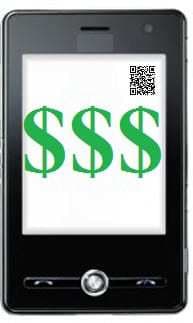This has now become the only American patented product with quick response code based transaction checkouts.
A mobile payments startup from Santa Ana, California, called SEKUR.me, has just announced that it has received US patent 8,677,116 for their secure transaction that uses a QR code in combination with sound and radio waves and push messages, as well as for secure logins.
The company’s mobile payments system uses the barcodes for the checkout and transaction process.
It is a system for one click mobile web payments that is designed specifically for mobile web browsers. Using the QR code in combination with the other methods allows an online payment to be completed within a matter of seconds, dramatically decreasing friction from the checkout experience and lowering the rate of shopping cart abandonment. At the same time, this system is also designed to help to boost the online conversion rate.
Using a QR code to decrease shopping cart abandonment will be quite a feat, from its current 97 percent rate.
 That, according to the data that has been released by Google regarding mobile commerce. Helping to reduce the friction during the checkout process could be key to being able to reduce that rate in a meaningful way.
That, according to the data that has been released by Google regarding mobile commerce. Helping to reduce the friction during the checkout process could be key to being able to reduce that rate in a meaningful way.
M-commerce has come a very long way over the years but has been held back by a few key issues. While people do love to browse items on their mobile devices, they hesitate to actually make a purchase on those gadgets and will either abandon the process altogether or will then switch over to a laptop or other larger screen device to complete the purchase. The reason is that there are two main concerns, which are security and convenience.
SEKUR.me has proposed – and patented – a method that they believe helps to overcome both of those main struggles. Therefore, it will also assist in eliminating the desire for consumers to abandon their mobile shopping cards and give up on the purchase or have to make it elsewhere.
By scanning a QR code, it sidesteps the need for a consumer to have to use the tiny or touchscreen keyboard in any significant way, eliminating the risk of keyboard loggers and man in the middle attacks, and overcoming the inconvenience of using those keyboards in the first place.
